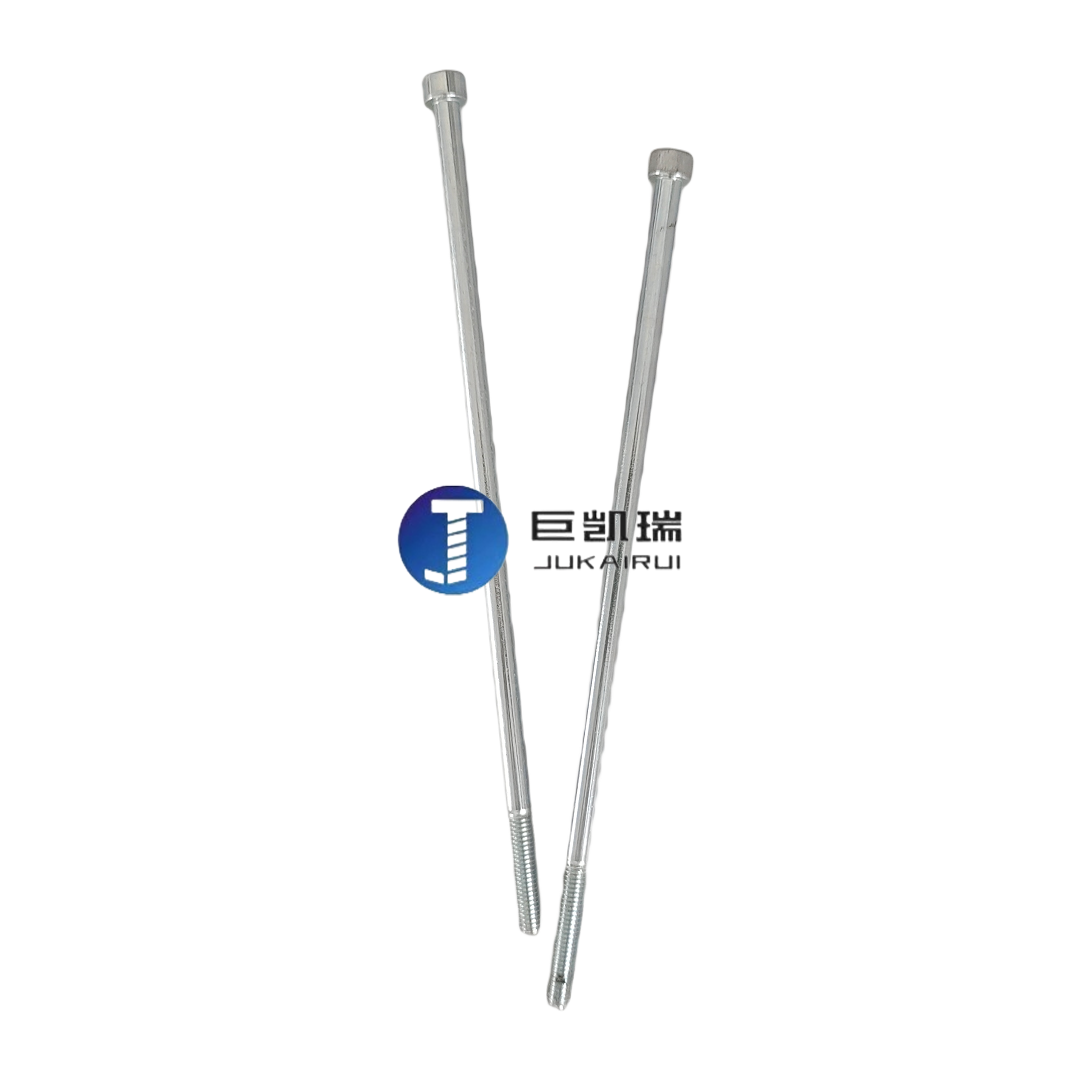Release time:2020-01-16 18:44 Browse:

In daily life and industrial production, screw loosening is a common and thorny problem. It may not only lead to equipment failure, affect work efficiency, and even in some key areas such as aerospace, automotive manufacturing, but also may cause safety accidents. For "How to solve the extension screw loosening?" In this topic, we will explore three effective methods: the use of anti-loose washers, the addition of thread glue and the use of double nut technology, in order to help readers better understand and apply these solutions to ensure screw tightness and stability.
### # 1, the use of lock gaskets: the wisdom of physical locking
Anti-loosening washer, as a simple and efficient anti-loosening device, its design principle is to use the special structure of the washer to generate additional locking force after the screw is tightened, and effectively resist the loosening brought by vibration and impact. Common anti-loose washers include spring washers, serrated lock washers and pre-tightened lock washers.
** Spring washer ** : Through the spring effect on the washer, the continuous elastic force is generated after the screw is tightened, so that the screw and the connector maintain close contact, reducing the loosening caused by vibration. Suitable for general mechanical equipment and auto parts fastening.
** Serrated lock washer ** : The inner and outer edges of the washer are designed with serrated protrutions. When the screw is tightened, these serrated protrutions are embedded in the surface of the connector, forming a mechanical bite, which greatly increases the anti-loosening ability of the screw. Suitable for applications requiring higher locking requirements, such as heavy machinery and precision instruments.
** Preload lock washer ** : This type of washer needs to be pretightened by a specific tool before installation to create prestress inside. When the screw is tightened, the prestress of the washer will further increase the locking force of the screw, forming a double guarantee. Suitable for locking requirements under extreme working conditions.
Second, adding thread glue: the power of chemical bonding
Thread glue, also known as anaerobic glue, is a liquid sealant that can cure quickly in isolated air conditions. It can form a strong adhesive film between the screw and the screw hole to effectively prevent the screw from loosening. According to the requirements of use, thread glue can be divided into low strength, medium strength and high strength three types.
** Low strength thread glue ** : Suitable for easily disassembled parts, such as machinery with frequent maintenance. It allows the screws to be easily removed without damaging the threads while maintaining the anti-loosening effect.
** Medium strength thread glue ** : Suitable for occasions requiring high fastening force and certain anti-loosening requirements. It can be quickly cured after screw tightening, forming a stable adhesive layer, effective resistance to vibration and shock.
** High strength thread glue ** : Designed for permanent locking, suitable for critical parts in extreme working environments. Once cured, it is almost impossible to remove manually, requiring the use of special tools or heating methods to separate.
When using thread glue, pay attention to clean screws and screw holes to ensure that there is no oil and impurities, so as not to affect the bonding effect. At the same time, according to the specific model and manufacturer's instructions, choose the appropriate coating method and curing time to ensure the best anti-loosening effect.
Three, the use of double nut method: the art of mechanical enhancement
The double nut method, as the name suggests, is to install two nuts on the same screw, and enhance the fastening force of the screw through the interaction between them. This method is simple and inexpensive, and is the first choice of many engineers and maintenance personnel.
In the specific operation, first install an ordinary nut and tighten it to a certain extent, and then install a nut on it and continue to tighten. There will be a force between the two nuts to squeeze each other, so that the screw is subject to additional tightening. This double fastening effect significantly reduces screw loosening due to vibration.
It is worth noting that although the double nut method is effective, it is necessary to pay attention to the size and material of the nut when selecting the nut to match the screw, so as to avoid insufficient fastening force or damage to the screw due to mismatch. In addition, during the installation process, it is necessary to ensure that both nuts can be evenly stressed to avoid deflection or loosening.
### Conclusion
To sum up, in view of the problem of loosening the lengthening screws, we can enhance the fastening force of the screws by using a variety of means such as anti-loosening washers, adding thread glue or using double nut methods to avoid loosening. Each method has its unique advantages and scope of application, and can be flexibly selected according to specific situations in practical applications. At the same time, regular inspection and maintenance of the screw fastening state is also one of the important measures to prevent loosening. Through scientific anti-loose measures and effective maintenance management, we can ensure the safe and stable operation of equipment, improve work efficiency and reduce unnecessary losses.
# Lengthening screws # Lengthening bolts # Lengthening outer hex screws # Lengthening inner hex screws # fasteners

